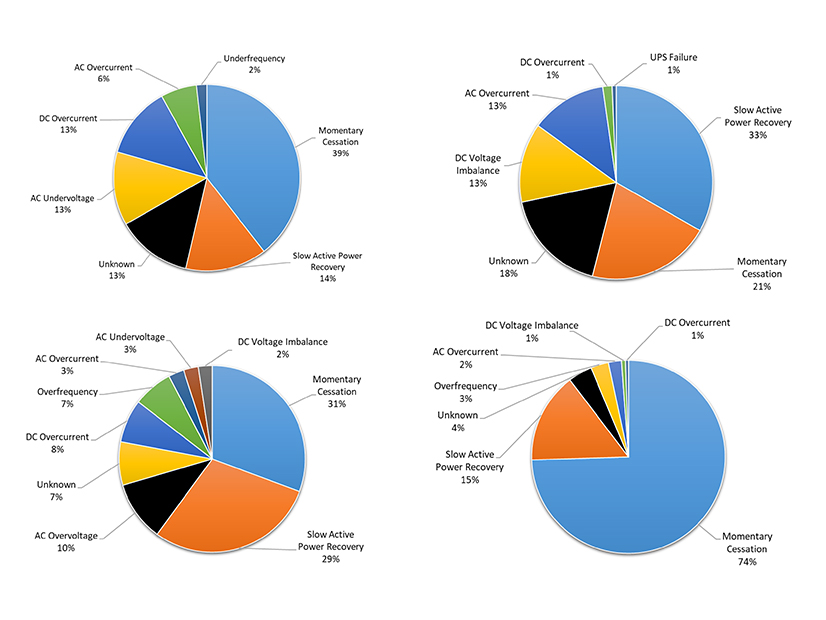Recently proposed utility performance standard amendments from the Maine Public Utilities Commission “fail to meet the moment,” Phelps Turner, senior attorney at Conservation Law Foundation, said Thursday.
Regulators’ March 3 proposal for measuring Maine transmission and distribution utilities’ performance does not satisfy current climate law and falls “well short of what’s needed to motivate our utilities to provide a cleaner and more affordable and reliable electric grid,” Turner said in testimony for a standards rulemaking proceeding.
The proposed rulemaking (2022-00052) follows a separate commission inquiry started in December 2020 (2020-00344) on whether updates to utility service quality metrics and incentives could help improve performance. Regulators, however, chose not to include metrics in the proposed amendments that would further state clean energy and environmental laws. Without those metrics, Turner said, the proposal does not align with a 2021 law directing the commission to consider climate impacts in its decision-making process.
Under the proposed rule, metrics and reporting requirements for system reliability, call answering, billing and customer satisfaction would be added to the current T&D utility service standards.
Metrics should also be included for distributed energy resource interconnection, grid modernization and environmental policies, according to Turner. CLF has recommended the commission consider metrics for greenhouse gas emission reductions from programs such as advanced metering and annual compliance with Maine’s Renewable Portfolio Standard.
It’s possible, Turner said, that the commission could phase in environmental metrics for the performance standards.
“Other states are looking at a phased approach, where you start with report-only metrics and then move into positive and negative financial incentives,” Turner said.
The Acadia Center also recommended a phased approach in its March 31 comments on the proposed rulemaking.
“While identifying specific performance benchmarks and targets for some performance categories may be premature without further investigation, Acadia Center believes that there is nevertheless value in establishing metrics and, at a minimum, beginning the process of tracking and collecting performance data,” the nonprofit said.
Establishing public reporting for utility performance, even without benchmarks and penalties, could motivate utilities to make positive changes, according to Acadia.
Enforcement
While the commission’s proposal does not directly address financial penalties for failing to satisfy the new metrics, enforcement provisions were a top concern for stakeholders during the hearing.
The rule would direct the commission to impose a financial penalty on a utility if it does not take corrective action when a performance target is not met. But the commission’s rulemaking notice indicates it will consider specific penalty provisions under a separate proceeding.
AARP Maine would like to see the commission provide more details about penalties in the proposal.
“The lack of any indication of how these reliability and customer service metrics will automatically trigger potential violations and adverse consequences for the utility is a significant concern of ours,” Barbara Alexander, a consultant to AARP Maine, said in the hearing.
The Maine Office of the Public Advocate supports penalties for “persistent and substantial failure to satisfy service standards,” according to testimony of Kristina Winther, OPA senior counsel. The office, however, would not support a provision that allows a reward for meeting standards, she said.
In Central Maine Power’s (CMP) (NYSE:AGR) view, the proposal is one-sided.
“To have all stick and no carrot just isn’t good public policy,” attorney Richard Hevey said in testimony. “If the utility has built into rates the ability to meet the metric and goes above and beyond that, it should be able to earn something beyond not being penalized.”
Versant Power suggested in its March 31 comments that utilities should have an opportunity to present evidence that a failure to meet a metric was due to extenuating circumstances, but Alexander said she was not “sympathetic to that argument.”
“These are annual standards,” she said. “Utilities rarely suffer external events that would not allow them to take steps to ensure annual compliance.”
Final written comments on the proposed rulemaking are due April 27.
Performance Bill
A T&D utility performance bill introduced this session by Gov. Janet Mills, if enacted, would overlap with the commission’s proposed rule. (See Maine Governor Revisits Vetoed Plan to Replace IOUs.)
The bill (LD 1959) would require the commission to adopt rules for quantitative planning and operational standards related to reliability, customer service, billing, generator interconnection and emergency response. Although the commission’s current rulemaking proceeding could meet the requirements set out in the bill, the OPA cautioned that passage of LD 1959 may force regulators to reopen the comment period in the docket.
Mills introduced the utility performance bill after vetoing a similar bill (LD 1708) last year that she believed needed more work. LD 1708 would have opened a direct pathway based on performance history for replacing Central Maine Power and Versant with a consumer-owned utility, but Mills’ approach puts the COU on the table based on future performance metrics.
With one week left in the legislative session and a divided report on LD 1959 from the Energy, Utilities and Technology Committee, the outlook for the legislation is uncertain.
The nonprofit Our Power, however, has reinvigorated its campaign to collect signatures for a citizen initiative to force a public vote on LD 1708 in November 2023.


